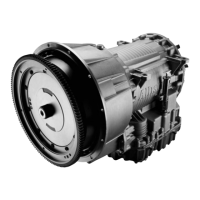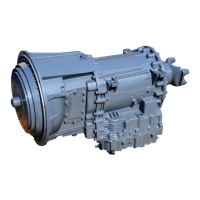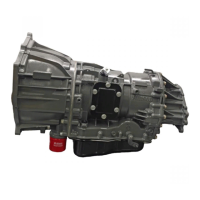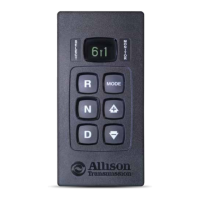f. Performing A Driving Transmission Stall Test.
CAUTION: The transmission stall test procedure causes a rapid rise in
transmission fluid temperature that can damage the transmission. Never
maintain a stall condition once engine speed stabilizes or converter out
(to cooler) temperature exceeds 150°C (300°F). During a stall condition,
converter out temperature rises much faster than the internal (sump)
temperature. Never use sump fluid temperature to determine the length
of the stall condition. If the stall test is repeated, do not let the engine
overheat.
1. Start the engine. While in neutral let the transmission warm to normal
operating temperature:
• Sump temperature 71–93°C (160–200°F)
• Converter out temperature 82–104°C (180–220°F)
2. Determine the hot transmission fluid level and adjust as necessary.
3. Turn OFF all engine accessories.
4. While located in an isolated area, begin the driving transmission stall test.
5. Select a hold range that will limit road speed (usually 2
nd
or 3
rd
range).
Never perform a driving stall test in reverse or low range (seven speed
models).
6. Operate the engine at 100 percent full throttle, maximum governed speed.
7. With the engine at maximum governed speed, begin gradually applying the
vehicle service brakes while maintaining 100 percent full throttle. When the
vehicle comes to a complete stop, record engine speed.
8. Record converter out (to cooler) temperature.
9. Reduce the engine speed to idle and shift the transmission to neutral.
10. Raise engine speed to 1200–1500 rpm for two minutes to cool
transmission fluid. At the end of two minutes, record converter out (to
cooler) temperature.
11. Proceed to Paragraph g. Neutral Cool-Down Check Procedure.
g. Neutral Cool-Down Check Procedure.
1. At the end of two minutes the converter out (to cooler) fluid temperature
should return to within normal operating temperature range.
2. If the transmission fluid does not cool within two minutes, the cause could
be a stuck torque converter stator or an issue with the transmission cooler,
lines, or fittings.
49
